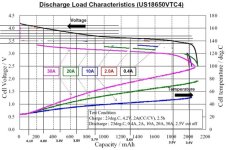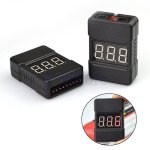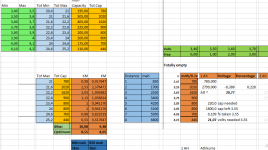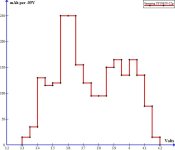DrkAngel
1 GW
B&D 20V Max 1.5Ah - 30wh
Could not find model markings.
Sanyo assumed ... that is their signature color.
Very likely:
Sanyo UR18650WX 1600mAh 20A discharge rate (derated due to lifesaving reduce charged voltage)
20V 20A = 120V 3.3A
or
Sanyo UR18650SAX 1500mAh 30A discharge rate
20V 30A = 120V 5.0A
Sounds about right for decent drill or fair-decent 5½" circular saw.
Some Sanyo basic specs:
Likely actual use.
Black & Decker-Stanley purchased DeWalt and Porter Cable and Bosch

Could not find model markings.
Sanyo assumed ... that is their signature color.
Very likely:
Sanyo UR18650WX 1600mAh 20A discharge rate (derated due to lifesaving reduce charged voltage)
20V 20A = 120V 3.3A
or
Sanyo UR18650SAX 1500mAh 30A discharge rate
20V 30A = 120V 5.0A
Sounds about right for decent drill or fair-decent 5½" circular saw.
Some Sanyo basic specs:
Likely actual use.
Black & Decker-Stanley purchased DeWalt and Porter Cable and Bosch









